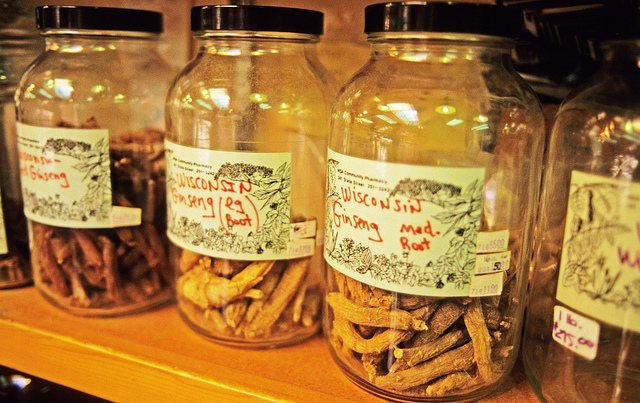With news of the emerging biotech company, Sionna, coming out of stealth yesterday, there is, once again, a reinvigorated hope for more transformational cystic fibrosis medicines on the horizon. In case you missed it, Sionna is attempting to correct CFTR with a small molecule drug like Vertex’s class of modulators but is targeting a different region on the CFTR protein. Sionna thinks they can do a better job. You can learn more here.
It’s hard to imagine a better drug than Trikafta, but we’re all very fortunate (it feels weird to say that..) that we live with a condition with very well understood biology. We’re in a position to think big about the future of CF drug development.
It also should be said that Vertex, too, is working on a next generation modulator (Deuterated Ivacaftor/tezacaftor/VX-121) that is both a smaller dose of drug than Trikafta, which could alleviate some of the rare side effects patients have reported, and potentially even more effective. The drug is currently in late-stage trials. AbbVie is working on a combination, too.
I have noticed an unsettled feeling across the CF community that supposes drug development is drying up for our condition short of gene therapies. I think that is false, and I genuinely cringe when I come across community members preaching that from the roof tops. I’d actually argue that cystic fibrosis drug reimbursement rates have demonstrated a willingness to pay for drugs that outperform existing standard of care. The global cystic fibrosis therapeutic market size is growing, and with it, overall economic activity in the CF world is growing, too, as we become less reliant on hospital care because of rapidly progressing disease.
Enhanced diagnostic practices across the globe are finding more people with CF, which contributes to the global population size. The other factor, and it’s an important one, is that patients are living longer. It’s morbid to think about it, but nonetheless an important input into our calculus, historically the size of our population has been hampered by a high mortality rate. As the mortality rate decreases, and the number of newly diagnosed patients increases, you’d see that our population will begin to swell. No, we’re not going to graduate from being a rare disease any time soon, and it’s true that our market size will never compete with some like diabetes or breast cancer, but our growing market is appealing to industry.
Vertex knows a thing or two about this. If you study the company’s history (I recommend the book, The Antidote), you’d know that Vertex held a strong command over the Hepatitis C market with a drug called Incivek. The drug was best in class and approved for use in 2012. You’ve probably never heard of Incivek, and that’s because it was beat… badly. By 2014, Sovaldi (which you probably have heard of it you know someone with Hep C), completely displaced Incivek from the Hep C market and forced Vertex to discontinue manufacturing it. In some ways, because Sovaldi outperformed Incivek, Vertex was nudged to double down on cystic fibrosis, and now here we are a decade later.
Imagine the cystic fibrosis market as a pie that grows a little bigger each year and sliced up according to drug class. Enzyme makers hold a piece, inhaled drug makers hold another, and then Vertex, at present, holds what I call CFTR rescue. Enzyme makers, for example, have routinely displaced each other as top dog in their slice, and Vertex has slowly started to eat away at other pieces of the pie because fewer people require inhaled therapies. As that last piece grows in proportion with the global CF market size, and shrinking other pieces, drug makers have decisions to make. They need to decide if developing a drug, which comes in with a price tag well north of $1 billion, could eat a big enough piece of the pie that a return would be captured. In sum, they are wondering if there’s enough room in pie slices for competition.
They need to understand if their technology is good enough to bet their company on the potential return a new drug could pull in.
So there are two questions drug makers need to ask themselves:
First, is the CFTR rescue piece of the pie going to be big enough for multiple players (because it will grow form the time we have an idea to when we license our drug) to make a meaningful return when we launch our drug? When I say “big” enough, I’m saying is there going to be enough potential revenue up for grabs?
Second, is our technology going to beat the existing champion, or, at the very least, achieve non-inferiority and be able to compete with that champion to take a piece of the pie?
These are essential questions, and that’s why I am enthused when I see how big our market is growing. If the cystic fibrosis market were far smaller than it is today, I fear our drug development pipeline would grow stagnant, just like the antibiotic pipeline has.
The antibiotic pipeline is stagnant because it’s near impossible for antibiotic makers to profit off antibiotic prescriptions inside hospitals. The reimbursement risk is far too great for drug makers to feel confident their drugs will be winners.
We do not have reimbursement risk in cystic fibrosis. Our society is willing to pay for our better health, and it needs to stay that way. That implies there is a breakeven point, or an inflection point, where, below a certain market size it would be no longer inviting for a company to try and snatch up a piece of the pie.
Our payors have demonstrated that it is, in fact, valuable to rescue CFTR. And because there is a value preposition to improve CFTR rescue, investors and translational medicine researchers are looking at CFTR as an important puzzle to crack and correct completely.
So what’s the best case scenario? Competition.
Vertex has a commanding lead that is benefiting patients across the globe, but all of us should want better options. Competition breads success and it can also turn our market into a lightning rod of economic competition. As soon as formularies have different options to select, prices will reflect those options. The CFTR modulator race is just starting to heat up, and if we can get another winner inside the CFTR rescue piece of the pie, we will all win.





